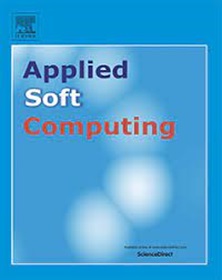通过基于脑电图的深度强化学习和软计算提高驾驶员注意力和道路安全
IF 7.2
1区 计算机科学
Q1 COMPUTER SCIENCE, ARTIFICIAL INTELLIGENCE
引用次数: 0
摘要
本文介绍了一种基于边缘计算的变革性方法,利用脑电图驱动的深度强化学习(DRL)提高驾驶员注意力和道路安全。由于驾驶员注意力不集中仍然是导致交通事故的一个重要因素,由车载边缘设备实现的实时认知状态监测带来了新的希望。我们的方法利用从使用耳机的驾驶员处收集的脑电图数据,分析与视觉注意力相关的信号。车载边缘计算资源使用深度 Q 网络(DQN)和近端策略优化(PPO)模型提取特征并对注意力水平进行分类,这些模型经过训练,可近似地做出最佳驾驶决策。结合驾驶性能和注意力的新型奖励结构为模型提供指导。我们的边缘计算驱动框架能在关键的时间延迟内做出反应,通过适应驾驶环境的干预措施最大限度地提高注意力。结果证明了这种方法的有效性,边缘设备上的 PPO 代理在注意力状态分类方面实现了高达 489,752.4 的高平均奖励和 99.3% 的奖励准确率,从而大大优于传统方法。这凸显了边缘计算在实现神经科学与人工智能的实时整合、促进道路安全方面的潜力。边缘资源可提供时间关键型分析和适应,而与雾和云的连接则可实现跨人群的大规模优化和学习。这项研究开创了由边缘智能驱动的道路安全新纪元。本文章由计算机程序翻译,如有差异,请以英文原文为准。
Enhancing driver attention and road safety through EEG-informed deep reinforcement learning and soft computing
This paper introduces a transformative edge computing-based approach for enhancing driver attention and road safety using EEG-driven deep reinforcement learning (DRL). As driver inattention remains a significant factor in accidents, real-time cognitive state monitoring enabled by in-vehicle edge devices offers new promise. Our method leverages EEG data collected from drivers using headsets, analyzing signals related to visual attention. Edge computing resources in the vehicle extract features and classify attention levels using Deep Q-Network (DQN) and Proximal Policy Optimization (PPO) models trained to approximate optimal driving decisions. A novel reward structure combining driving performance and attention guides the models. Our edge computing-powered framework reacts within critical time latencies to maximize attention through interventions adapting to the driving environment. Results demonstrate the effectiveness of this approach, with PPO agent on edge devices achieving high average rewards up to 489,752.4 and 99.3% reward as accuracy in classifying attention states, thereby significantly outperforming traditional methods. This underscores edge computing’s potential to enable real-time integration of neuroscience and AI, advancing road safety. The edge resources deliver time-critical analysis and adaptation, while connectivity to the fog and cloud allows optimizing and learning at scale across populations. This research pioneers a new epoch for road safety powered by edge intelligence.
求助全文
通过发布文献求助,成功后即可免费获取论文全文。
去求助
来源期刊

Applied Soft Computing
工程技术-计算机:跨学科应用
CiteScore
15.80
自引率
6.90%
发文量
874
审稿时长
10.9 months
期刊介绍:
Applied Soft Computing is an international journal promoting an integrated view of soft computing to solve real life problems.The focus is to publish the highest quality research in application and convergence of the areas of Fuzzy Logic, Neural Networks, Evolutionary Computing, Rough Sets and other similar techniques to address real world complexities.
Applied Soft Computing is a rolling publication: articles are published as soon as the editor-in-chief has accepted them. Therefore, the web site will continuously be updated with new articles and the publication time will be short.
 求助内容:
求助内容: 应助结果提醒方式:
应助结果提醒方式:


